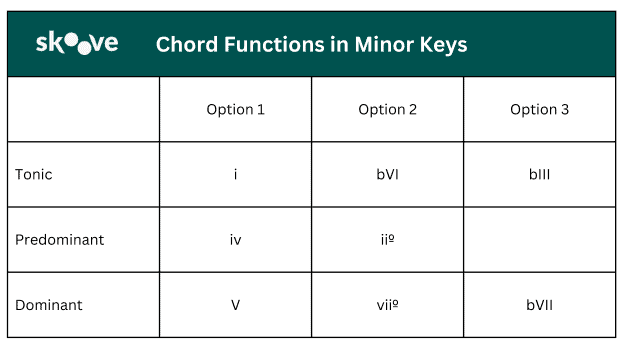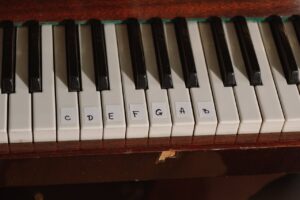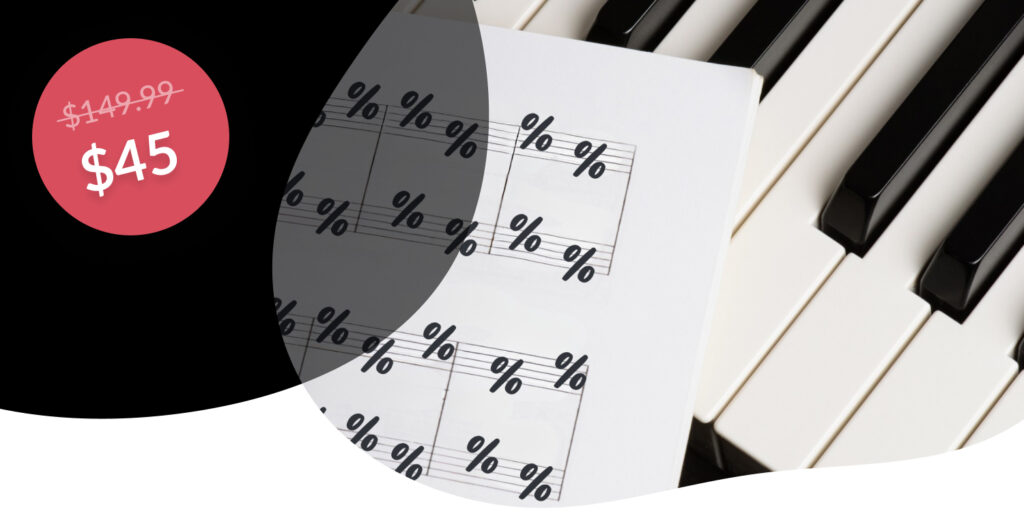What is a chord progression? Chords are the foundation of most music. They shape emotion, provide structure and add colour. Played in sequence their meaning is influenced by context. The relationship between chords is called a chord progression, what we’ll be looking at in this article. Understanding and writing chord progressions is key for any musician as chords are the basis of both harmony and melody. At Skoove we’re here to support your piano journey. By the end of this article you’ll know more about chord progressions and get some useful tips for playing, reading and learning them on piano. We’ll also look at common chord patterns to add to your repertoire and skills. Let’s get started!
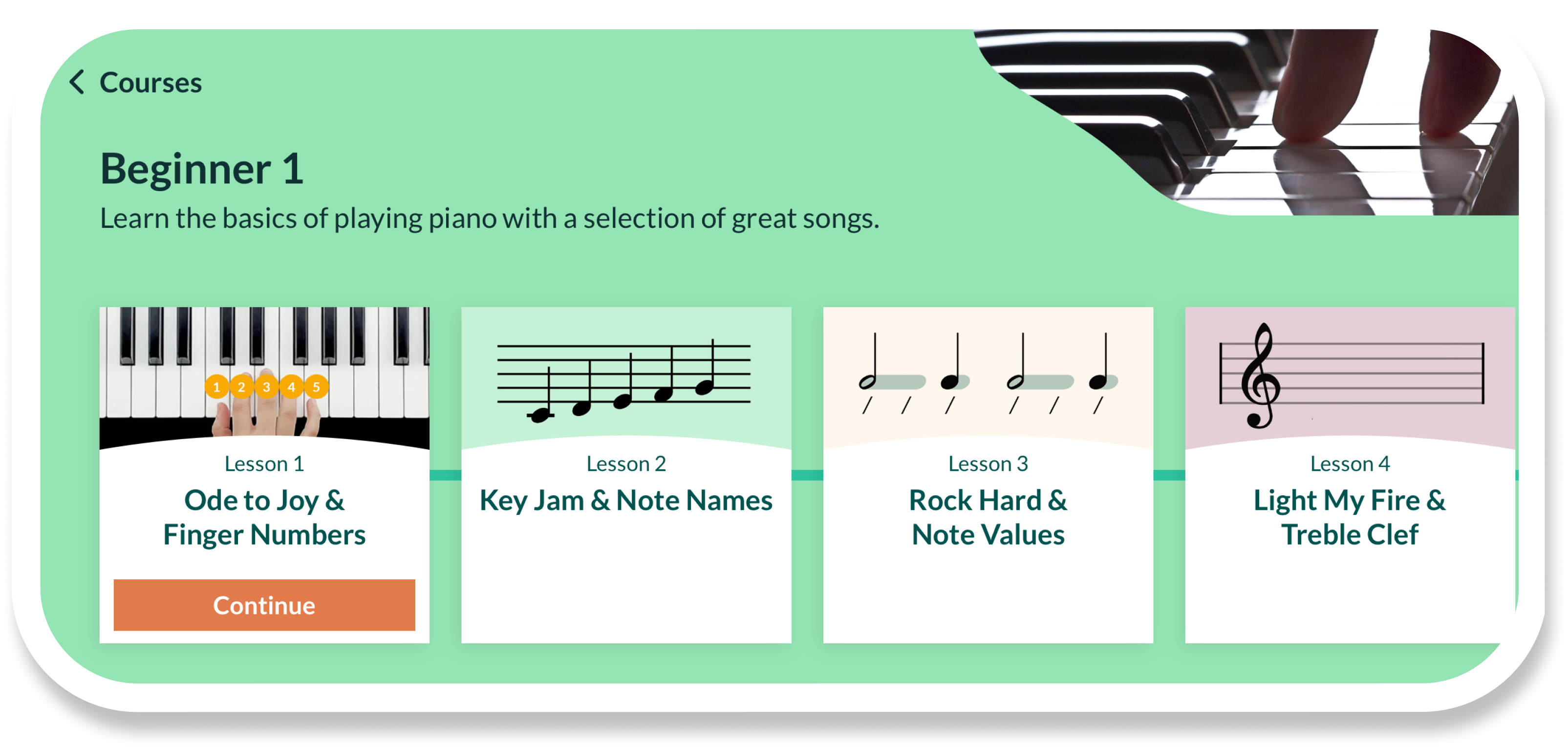
What are chord progressions?
A chord is a collection of pitches that when played simultaneously, act as a harmonic unit. For instance, the pitches C, E and G, form a C major chord. If you’re feeling rusty on piano chords feel free to read this article before moving on.
We can define a chord progression (also called harmonic progression) as a sequence of chords, in succession. The order of the chords is important as the effect that a chord can have depends heavily on context. Take a look at the following C major chord progression.
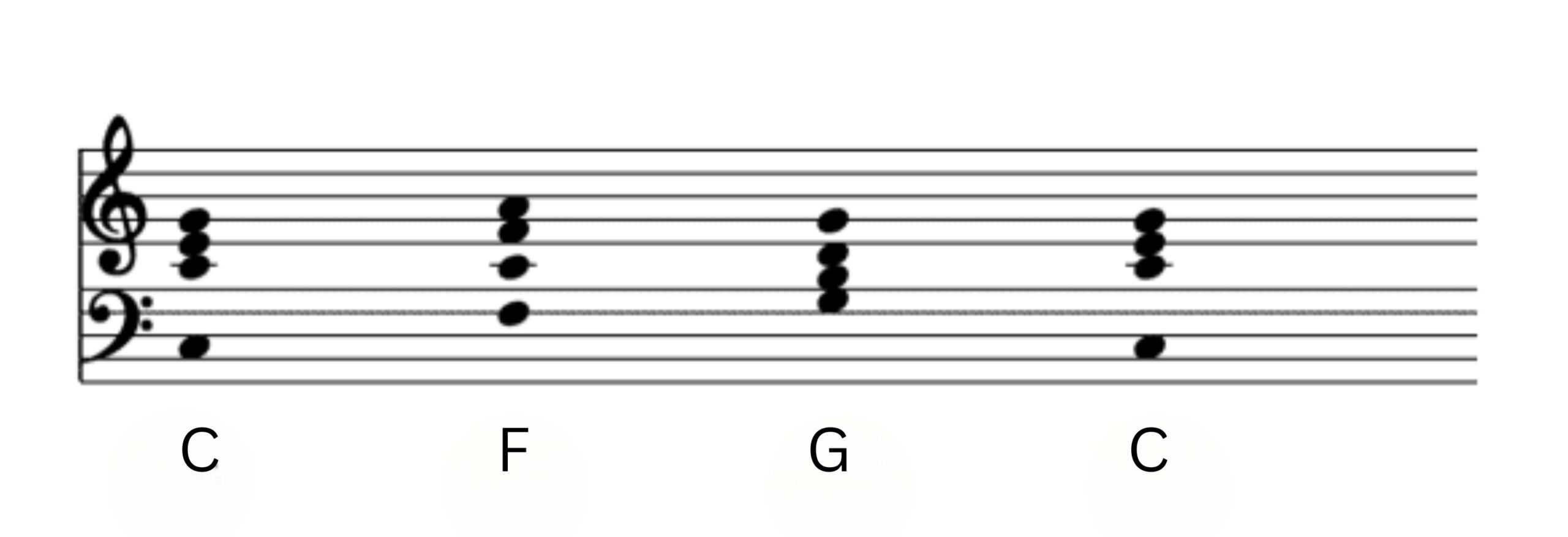 Here we have a progression consisting of 4 chords, C major, F major, G major and C major again. There’s a few things worth mentioning here:
Here we have a progression consisting of 4 chords, C major, F major, G major and C major again. There’s a few things worth mentioning here:
- Piano chord progressions are often in a specific key making use of both major and minor chords.
- A chord progression can have repetitions or no repetitions at all.
- The number of chords in a chord progression can vary greatly but are usually between 4 and 8 bars long.
- Chord progressions often have a clear sense of direction, hence the word progression.
We can think of any progression as an interaction between moments of release and tension or consonance and dissonance. Play this progression paying attention to the amount of tension and release that each chord brings.
Common chord progressions
Now it’s time to look at some of the most common chord progressions. Notice how when notating chords with roman numerals upper case means major and lower case means minor. Chord extensions are notated with added arabic numerals. Take a look at this useful chord progression chart.
| Progression | Number System | Chords in C Major |
|---|---|---|
| Basic I–IV–V (Three-Chord) | I – IV – V | C – F – G |
| 12-Bar Blues | I – I – I – I – IV – IV – I – I – V – IV – I – I (or V) | C – C – C – C – F – F – C – C – G – F – C – C (or G) |
| Pop “Four-Chord” | I – V – vi – IV | C – G – Am – F |
| Pop Progression (Altered) | vi – IV – I – V | Am – F – C – G |
| 50s “Doo-Wop” | I – vi – IV – V | C – Am – F – G |
| Jazz Turnaround | ii⁷ – V⁷ – Imaj⁷ | Dm⁷ – G⁷ – Cmaj⁷ |
| Pachelbel’s Canon | I – V – vi – iii – IV – I – IV – V | C – G – Am – Em – F – C – F – G |
| Circle Progression | I – IV – viiº – iii – vi – ii – V – I | C – F – Bdim – Em – Am – Dm – G – C |
| Andalusian Cadence (Minor) | i – VII – VI – V | Am – G – F – E |
| Andalusian Cadence (Major) | i – bVII – bVI – V | Cm – Bb – Ab – G |
| Modal Progression | I – bVII – IV | C – Bb – F |
| Royal Roads Progression | IV – V – iii – vi | F – G – Em – Am |
Let’s break each of these chord progressions down in more detail.
The jazz progression ( ii – V – I/ ii7-V7-I7 )
Although this progression is extensively used in many kinds of music, it’s most commonly associated with jazz. Try playing it these two version and see if it reminds you of any song:

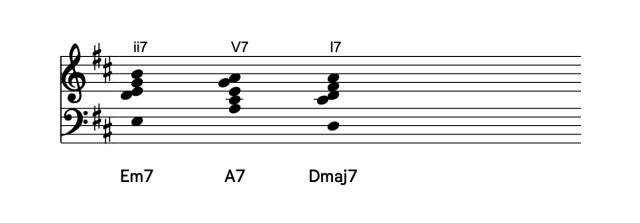
The 12-bar blues ( I-I-I-I-IV-IV-I-I-V-IV-I-I or V)
The 12-bar blues or blues chord progression is another, perhaps even more, recognizable progression. This progression was particularly popular during the 20’s-50’s, but still turns up in all styles of music. Feel free to play it yourself:
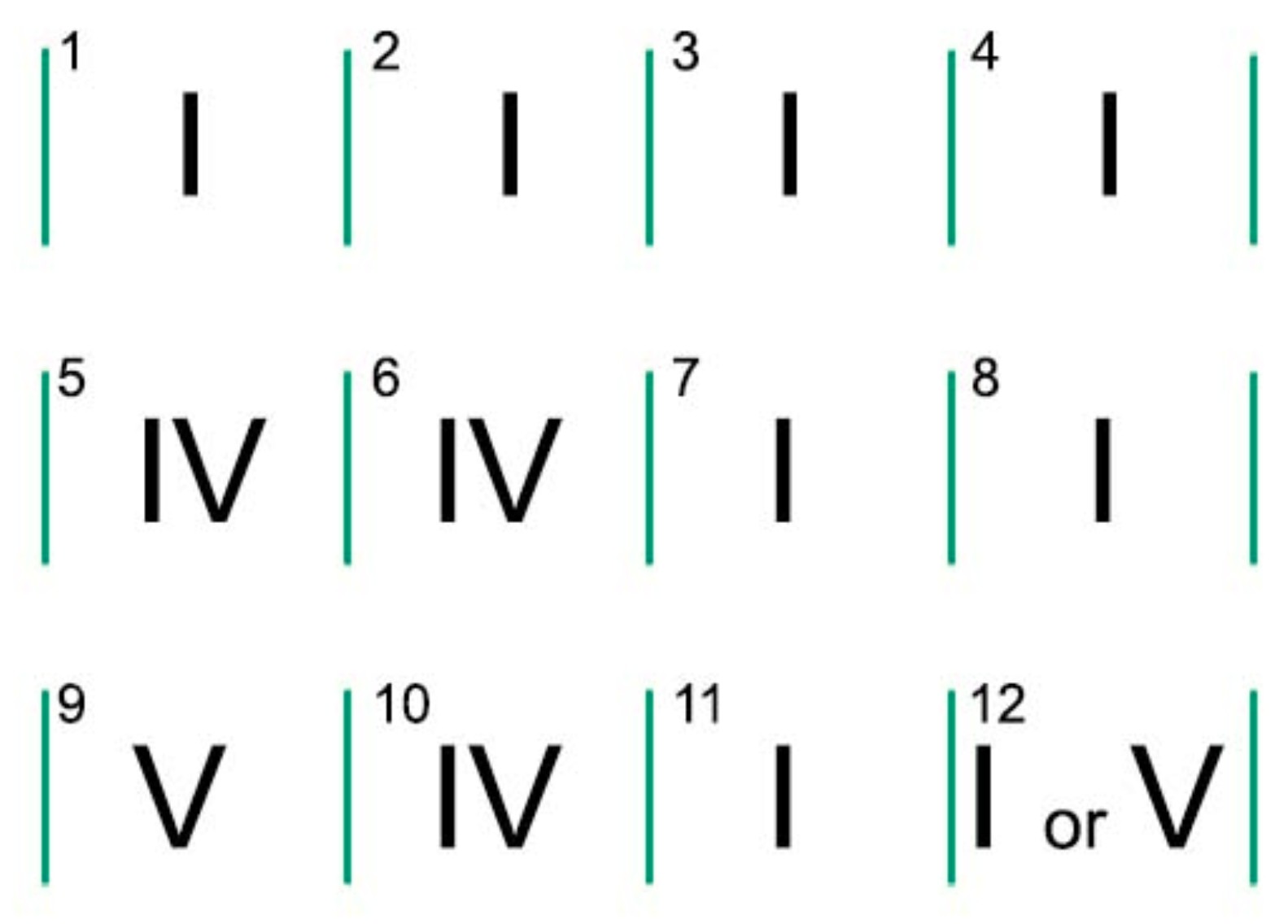
Some of the many well known songs that use this pattern are: Rock and Roll Music by The Beatles, Still Haven’t Found What I’m Looking For by U2 and Hound Dog by Elvis Presley.
The Pop formula ( I–V–vi–IV )
This progression is also featured in plenty of songs, including pop music hits like Taylor Swift’s Clean or Aerosmith’s Cryin’. Give it a try and see if it brings any other pop songs to mind.
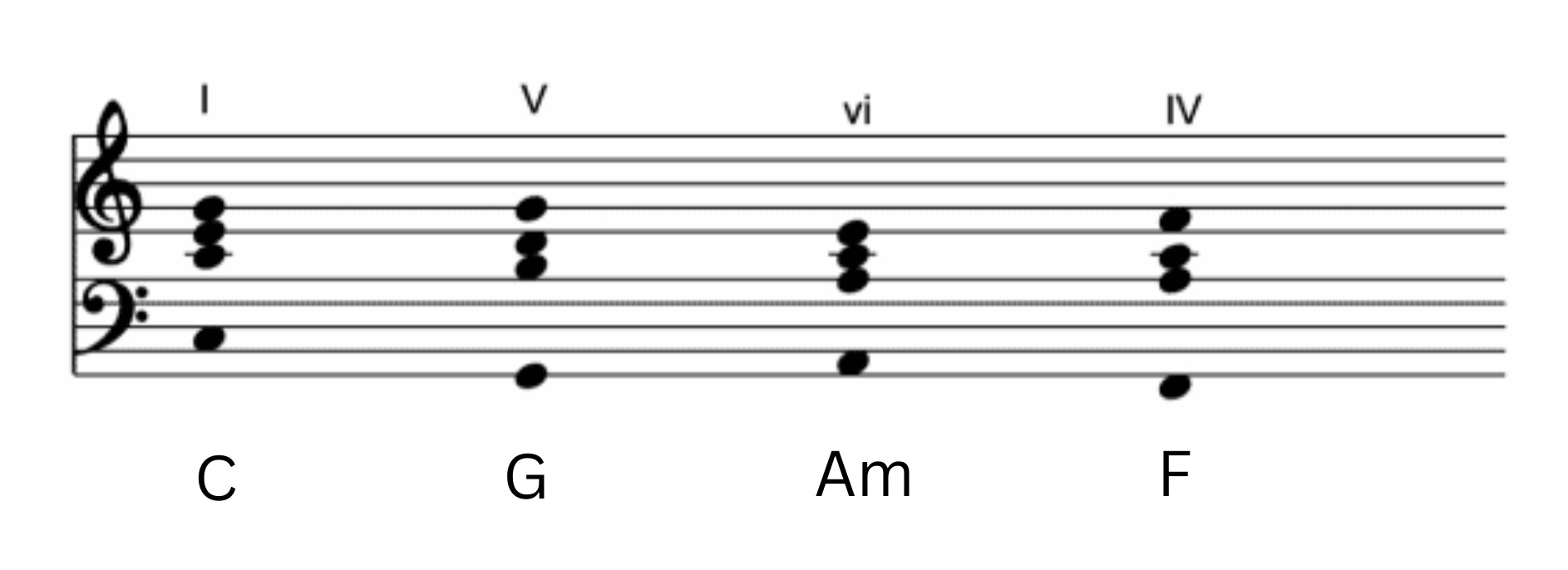
The Doo-Wop pattern (I–vi–IV–V)
This progression is also known as the 50s progression, this chord progression is used by Elton John in Crocodile Rock, as well as by Avril Lavigne in Complicated.
This progression is everywhere in music, from 1950’s doo-wop styles to contemporary pop and rock tunes. It also happens to be used in Eric Idle’s Always Look on the Bright Side of Life, which you can learn through the Skoove app.
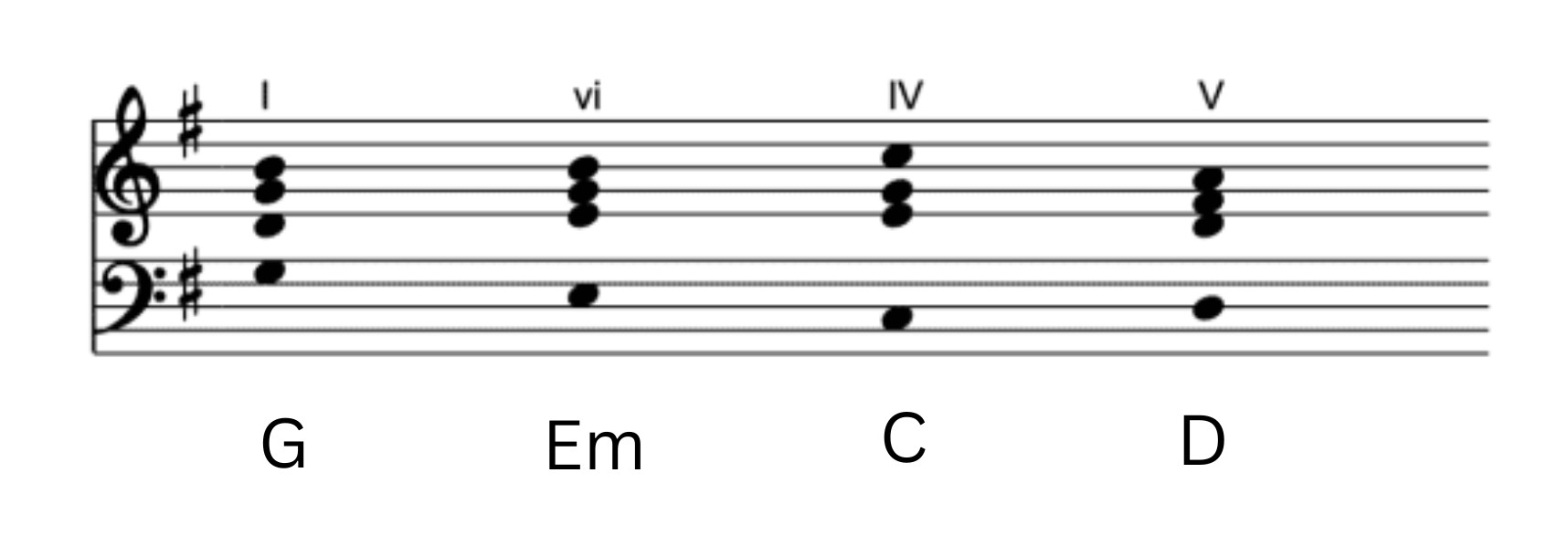
This progression is everywhere in music, from 1950’s doo-wop styles to contemporary pop and rock tunes. It also happens to be used in Eric Idle’s Always Look on the Bright Side of Life, which you can learn through the Skoove app.
The modal progression (I–bVII–IV–I)
This progression is most common in Classic Rock. Different from the previous progressions, it contains a ‘borrowed’ chord. This simply means that, even though it’s a major key progression, we find the bVII chord, which is being ‘borrowed’ from the minor key.
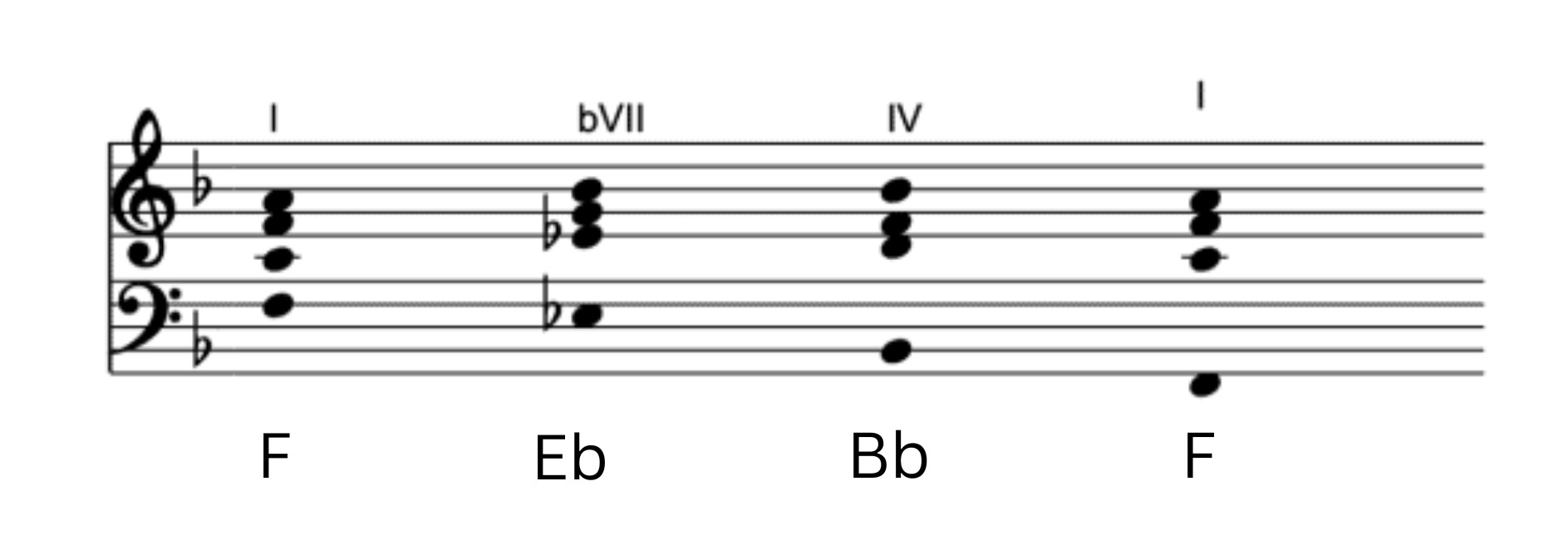
Popular examples of this include the final section of Hey Jude by The Beatles, or the verse in Guns N’ Roses’ Sweet Child O’ Mine.
The Pachelbel’s progression(I – V – vi – iii – IV – I – IV – V )
This progression is commonly associated with Johann Pachelbel’s Canon in D. Some relatively recent examples include Maroon 5’s song Memories, Belle and Sebastian Get me away from here I’m dying.
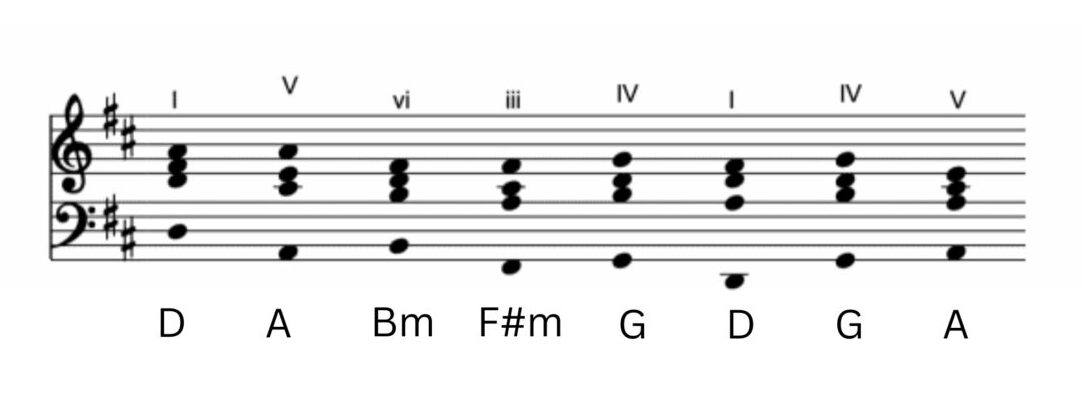
Creating emotion through chord combinations
As we have heard, chord progressions can create a narrative. The order and context and structure of each chord and chord progression can drastically change or subtly alter the atmosphere of the progressions you create. Play these progressions and once you’re confident switch the chords, swap them about and see what your changes do to the feeling of each progression:
- “Happy” progression: I-IV-V
- “Sad” progression: vi-iii-V-IV
- “Hopeful” progression: IV-V-vi-I
How chord progressions work?
Progressions are often defined by their interplay between tension and release. In the previous example, G major creates tension, C major provides release and F major acts as a transition or contrast between the two.

All available triads in C major

All available triads in G major
Consider all available triads in C major and G major. While chord names differ, their Roman numeral labels (I, ii, iii, etc.) remain the same. These labels help us understand chord relationships, regardless of the key.
- Major chords use uppercase numerals, minor chords lowercase (e.g., D minor in C major is ii).
- Flats or sharps (e.g., bVI or #VI) indicate a chord lowered or raised by a half-step.
- Diminished chords use lowercase numerals with a circle (e.g., viiº in G major).
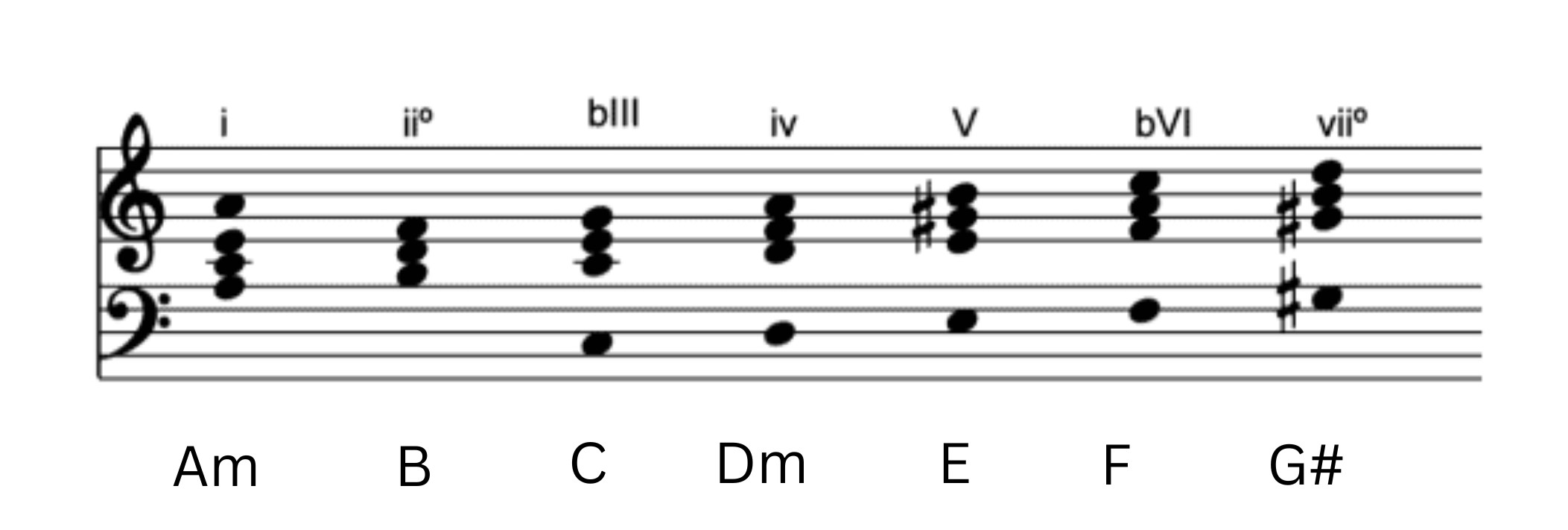
All available triads in A harmonic minor piano scale
In most Western tonal music, chords serve three roles based on their scale degree:
- Tonic ( I ): Provides closure or release, typically at the beginning or end of progressions.
- Dominant (V): Creates tension, often the climax of a phrase.
- Pre-dominant (ii/ IV): Transitions between tonic and dominant.
Here’s a piano chord progressions chart cheat sheet for both major and minor keys:
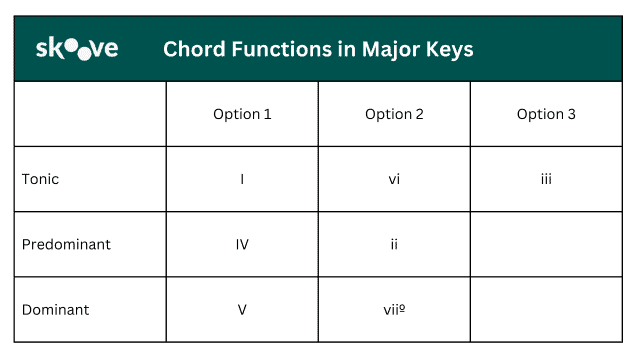
For each role, certain chords are preferred. For example, in a major key, the I chord is a stronger tonic than vi or iii. Try auditioning these chords yourself and see which you prefer.
With a little practice with Skoove you’ll soon be able to use this to create your own chord progressions and eventually, your own songs.
Using a piano chords generator
This piano chords generator helps you to find any chord you need and will come in handy if you forget any chords along your way.
💡If you are reading this from a mobile device, rotate it to display the tool in full width.
- Click on “Chords”
- Choose the “Root” of the chord
- Choose the “Chord qualities” (major, minor, etc.)
- Click “Display”
Tools like this are helpful; there is no substitute for developing your chord knowledge and an ear for chord progressions.
In this article, we explored different chord progressions, what they are, how they work as well as tips for writing, reading and playing them on the piano. While the topic can be challenging, mastering chord progressions is a highly rewarding skill.
The key is to practice regularly then incorporate your favorite progressions into your routine and as you grow more confident consider working through the Chords & Scales course. This will expand your musical knowledge and introduce you to more common progressions. Get creative, and soon you’ll be able to accompany hundreds of songs. Happy practicing!
Author of this blog post:

Published by Lydia Ogn from the Skoove team








